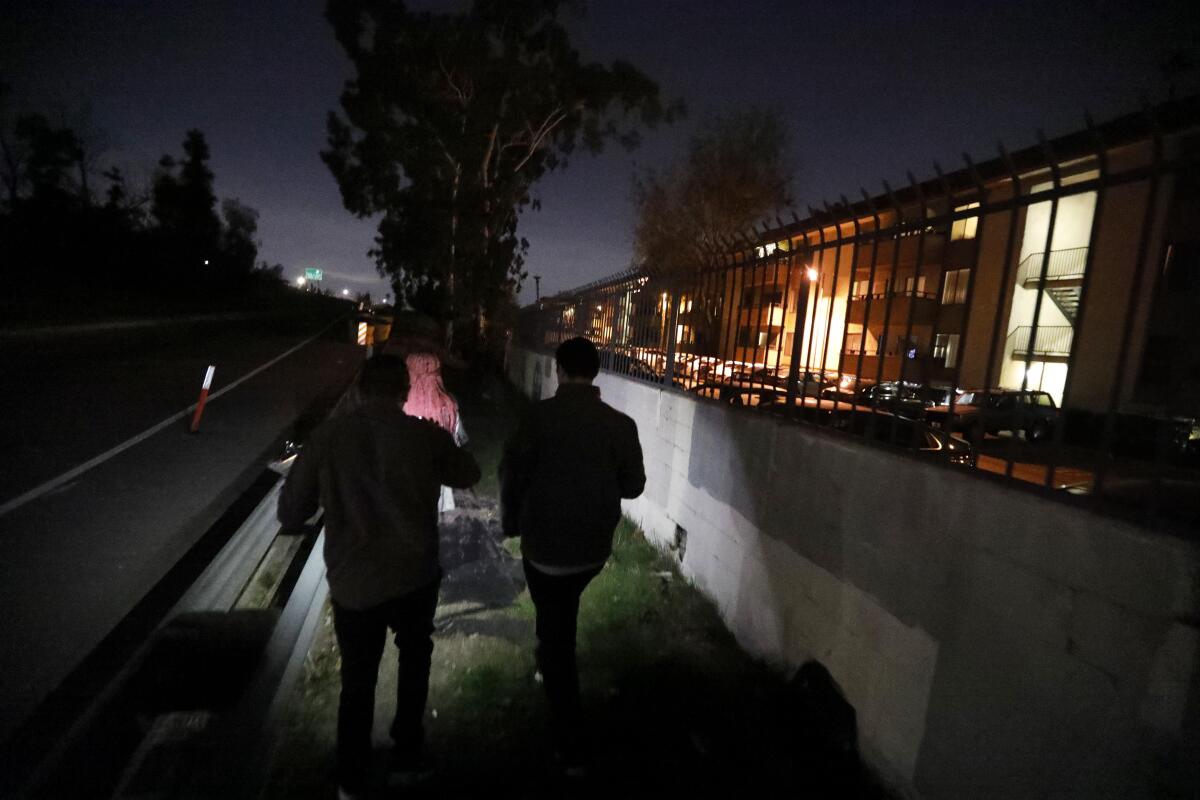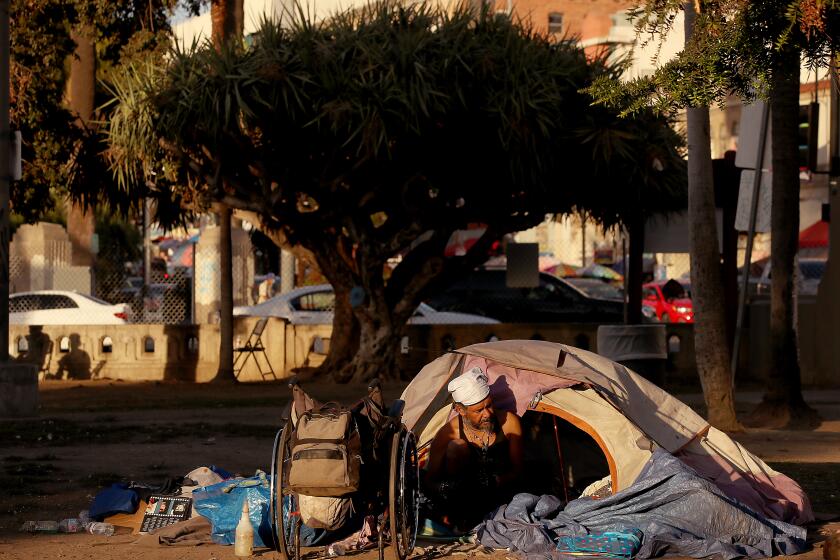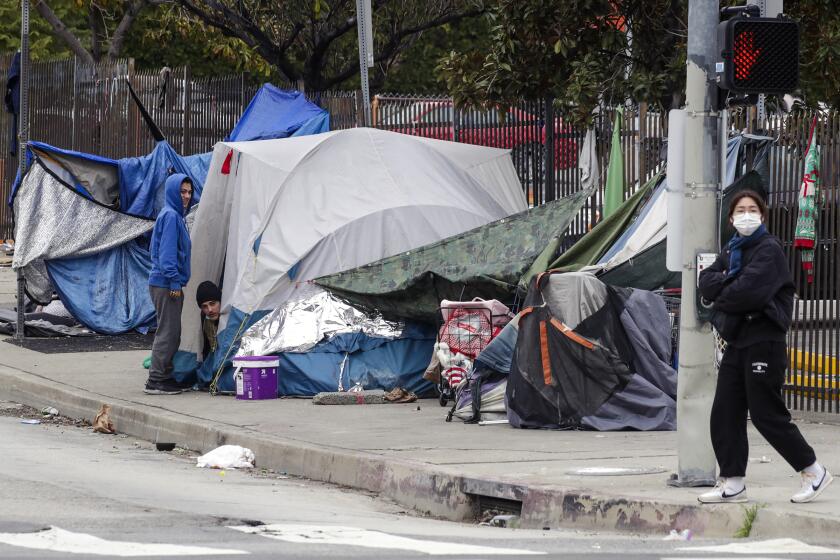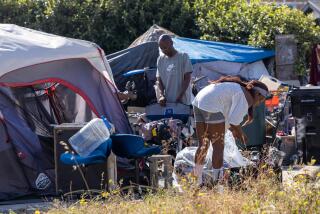Greater Los Angeles homeless count resumes after pandemic-related hiatus

- Share via
After a yearlong hiatus during the pandemic, thousands of volunteers will fan out across Los Angeles County this week to conduct the annual count of the region’s homeless population.
The Los Angeles Homeless Services Authority canceled the event last year and then delayed it last month because of COVID-19 surges spawned by the Delta and Omicron variants of the coronavirus.
Known as the “point-in-time” homeless count, the survey helps Los Angeles County determine where to distribute resources for homeless people and allocate state and federal funding.
This year’s count, which will take place over three days beginning Tuesday, is an especially important one for the county. It’s the first time volunteers will conduct the count electronically. It also coincides with an election year when homelessness and housing affordability have become pressing issues for voters, particularly those in the city of L.A. Millions of dollars in state and federal funding are also at stake.
LAHSA officials say the results of the count, which may not be released until May or June, will provide a better picture of how much the pandemic has added to homelessness.
L.A. voters want the government to focus on shelter for homeless people living in the streets, even if those efforts are short term, a poll has found.
The last count, conducted in 2020, reported that 66,436 people were experiencing homelessness in the county, a 13% increase from the previous year.
Heidi Marston, executive director of LAHSA, said in a statement that the annual census is an essential tool that provides insight into the current state of homelessness in the county.
“It’s the first count done after the COVID-19 pandemic began, which we’ve worked to keep people experiencing homelessness safe through but whose effects we need to assess across the region,” she said. “It’s more important now than ever before for us to understand what homelessness looks like across Los Angeles so we can deploy resources as effectively as possible moving forward.“
Cheri Todoroff, executive director of the Los Angeles County Homeless Initiative, echoed that sentiment.
“We missed a year,” she said in a phone interview. “We know things have shifted during that period of time.”
Tabulating the county’s homeless population is no small feat and costs more than $1 million. Volunteers — 7,000 had signed up for the aborted January dates — will spend the first day of the count in the San Gabriel and San Fernando valleys, toting up tents, makeshift dwellings and vehicles they deem occupied.
The volunteers do not attempt to determine how many people are sharing those dwellings. That job goes to a USC data team, which conducts a demographic survey.
The homeless count picks up on Wednesday in West Los Angeles, Southeast Los Angeles County and the South Bay. And finally, volunteers Thursday canvass the Antelope Valley, metro Los Angeles and South Los Angeles.
Voters are angrier than ever about homelessness and aren’t confident elected officials can adequately address the crisis, a survey of focus groups finds.
In the past, volunteers carried clipboards and filled out written forms with their tabulations. But this year, LAHSA contracted with Akido Labs, a healthcare data management firm, to develop a phone app that volunteers can use to log in the information while maintaining a distance amid the continued threat of the pandemic. The app was also used by the USC data team.
Akido Labs co-founder and Chief Executive Prashant Samant said the shift to a digital count that captures accurate data and demographic information in real time is an important step toward reducing homelessness.
“If we can understand people experiencing homelessness better — who they are, why they’re homeless, and what health issues they have — we can create more effective strategies quicker,” he said.
It’s not the first time the county has contracted with the firm. In April 2020, the firm launched a wellness app for the county. The HotSpot app allowed outreach workers to screen residents living on the streets for COVID-19 and urge them to get tested. The app allowed the data to be shared with the L.A. County Department of Health Services, which could deploy testing teams to areas with high positive test rates.
Homeless advocates hope modernizing the annual count will cut down the time it takes to receive the final results that they rely on when directing funding for neighborhood programs.
“Using this new technology creates a lot of ease for the volunteers who are out there doing the count,” Todoroff said. “And it also has real-time data that’s fed to the team that is working on the numbers behind the scenes so they can respond to them much quicker.”
More to Read
Sign up for Essential California
The most important California stories and recommendations in your inbox every morning.
You may occasionally receive promotional content from the Los Angeles Times.













